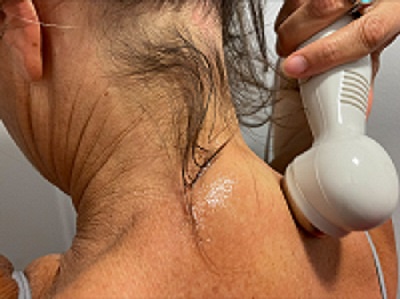In today's sedentary lifestyle, many individuals are experiencing various body changes, including the development of a fat hump on the back of the neck. This issue, commonly known as a buffalo hump or dowager's hump, can cause physical discomfort and affect self-confidence. In this post, we will answer your frequently asked question, ‘What causes fat hump on the back of the neck, shedding light on the possible triggers and providing insights into prevention and management.
Understanding the Anatomy
Before exploring the causes, it is essential to understand the anatomy of the neck and upper back. The uppermost part of the spine, known as the cervical spine, is comprised of seven vertebrae that provide stability and support. Adjacent to the cervical spine is a layer of fat, which acts as a cushion and aids in protecting the vertebrae. However, excess accumulation of fat in this region can lead to the formation of a visible hump.
Potential Causes
- Weight Gain and Obesity: You’ll be wondering ‘what causes fat hump on the back of the neck’. One of the primary factors contributing to the development of a fat hump on the back of the neck is excessive weight gain or obesity. When an individual gains weight, fat can accumulate in various parts of the body, including the neck and upper back. The extra weight exerts pressure on the cervical spine, resulting in the formation of a visible hump.
- Poor Posture: Maintaining a poor posture, such as slouching or hunching over, can gradually contribute to the development of a fat hump on the back of the neck. Prolonged periods of incorrect posture can cause the muscles in the neck and upper back to weaken and the fat deposits to become more prominent.
- Cushing's Syndrome: Cushing's syndrome, a hormonal disorder caused by prolonged exposure to high levels of cortisol, can lead to fat redistribution in the body. In this condition, excessive cortisol production can cause fat to accumulate in specific areas, including the back of the neck, resulting in a buffalo hump.
- Genetic Predisposition: Some individuals may be genetically predisposed to storing fat in certain areas of the body, including the back of the neck. Genetic factors can influence how the body distributes fat, making some people more prone to developing a fat hump than others.
Prevention and Management
- Maintain a Healthy Weight: Managing a healthy weight through a balanced diet and regular exercise is crucial in preventing the formation of a fat hump on the back of the neck. By adopting a healthy lifestyle, you can minimize the risk of excess fat accumulation and support overall well-being.
- Practice Good Posture: Paying attention to your posture can significantly help in preventing the formation of a fat hump. Ensure that you maintain a neutral spine position, especially during prolonged periods of sitting or standing. Incorporate regular breaks and exercises to strengthen the muscles of your neck and upper back.
- Seek Medical Advice: If you notice the development of a fat hump on your neck despite adopting healthy habits, it is advisable to consult a healthcare professional. They can evaluate your specific situation, perform necessary tests, and recommend appropriate treatment options, which may include lifestyle modifications or medical interventions.
Conclusion
While the development of a fat hump on the back of the neck can be concerning, understanding its causes and taking preventive measures can help manage this condition. By maintaining a healthy weight, practicing good posture, and seeking medical advice when necessary, individuals can reduce the risk of a fat hump and enhance their overall well-being. Remember, a proactive approach toward your health and lifestyle choices can have a significant impact on preventing and managing various body changes.
Frequently Asked Questions (FAQs)
Q1: What is a fat hump on the back of the neck?
A1: A fat hump on the back of the neck, also known as a buffalo hump or dowager's hump, refers to an excessive accumulation of fat in the region between the neck and upper back. It often appears as a visible lump or bump and can cause discomfort and affect posture.
Q2: What causes a fat hump on the back of the neck?
A2: The causes of a fat hump on the back of the neck can vary. Some common factors include weight gain and obesity, poor posture, Cushing's syndrome (hormonal disorder), and genetic predisposition. Excess weight, weakened muscles, hormonal imbalances, and genetic factors can contribute to the development of this condition.
Q3: Can poor posture alone cause a fat hump on the back of the neck?
A3: Poor posture alone may not directly cause a fat hump, but it can contribute to its development over time. Prolonged periods of slouching or hunching can weaken the muscles in the neck and upper back, making the fat deposits in that area more noticeable.
Q4: Can losing weight eliminate a fat hump on the back of the neck?
A4: Losing weight can help reduce the size of a fat hump on the back of the neck, especially if it is primarily caused by excess weight or obesity. Adopting a healthy lifestyle with a balanced diet and regular exercise can aid in overall weight loss and fat reduction throughout the body, including the neck area.
Q5: Is surgery the only solution for removing a fat hump on the back of the neck?
A5: Surgery is not always necessary to address a fat hump on the back of the neck. In many cases, non-surgical approaches are effective, such as lifestyle modifications (weight management, posture correction, and exercise) and medical interventions targeted at underlying hormonal disorders. However, in certain situations where conservative measures are not sufficient, surgical options may be considered.


No comments yet